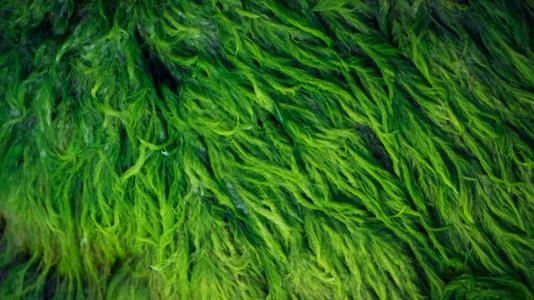Argonne study shows that carbon emissions that come from making ethanol can cultivate algae which in turn can be used to make biofuel.
When you hear the word biofuel, corn is likely the first thing that comes to mind. But algae is in fact another viable alternative—if it can be mass produced.
Algae are a group of aquatic organisms capable of photosynthesis. Seaweed, pond scum and giant kelp are some well-known examples. As a whole, algae have the potential to produce 10 to 100 times more fuel per acre of land compared to other crops, but requires lots of water and carbon dioxide (CO2) to grow. These resources are limited in many U.S. regions, making it hard to sustain production. However, the Midwest—which is abundant in high purity CO2 thanks to corn ethanol production—is an area where algae generation has the potential to bloom.
Fermenting corn yields concentrated CO2 along with ethanol. Researchers at the U.S. Department of Energy’s (DOE) Argonne National Laboratory and Pacific Northwest National Laboratory (PNNL) recently published a study detailing the challenges and opportunities associated with leveraging this CO2 to grow algae in the Midwest.
“This work ultimately shows the potential for growing algae in the Midwest while mitigating emissions from ethanol production. It is a region to consider moving forward for those seeking to commercialize algal carbon capture and utilization technologies,” Argonne senior scientist Troy Hawkins, a study co-author.
Hawkins and his team’s findings reveal that Midwest conditions can support algae growth and that year-round fuel production can be maintained by using other materials, such as wood residue, to generate fuel in the seasons when algae doesn’t grow well. They also found that cultivating algae in this manner can in turn reduce the greenhouse gas emissions from ethanol production by eliminating the need for ethanol producers to capture the carbon made along the way.
“Warmer regions like the southern states are usually considered better for growing algae, but many locations have limited access to the water and carbon dioxide needed for algae cultivation,” Hawkins said. “One of the questions we tried to answer in this study is whether the benefit of abundant, high-purity CO2 and freshwater in the Midwest would offset the less favorable growth conditions in the region.”
Benefits of Midwest production
Midwest states are not generally considered favorable for algae production due to their cold winters. However researchers found that, in warmer months, a Midwest algae pond could cultivate as much algae as southern states but with less water stress. And when concentrated CO2 from corn ethanol production—versus dilute CO2 from coal power plants—is used, the process becomes more energy efficient.
“Using the concentrated CO2 from corn fermentation to grow algae has the potential to reduce the carbon intensity of ethanol while producing additional algal biofuel,” Hawkins said. “This is important, as corn fermentation generates a significant amount of CO2—very roughly, one-third of the carbon in corn goes into the ethanol, one-third is left in the distiller’s grain, which is used as animal feed, and one-third goes to the atmosphere.”
Life cycle analysis detailed impact
Researchers arrived at their results after doing a full life cycle analysis of the process for making algae-based biofuel. They relied on Argonne’s Greenhouse gases, Regulated Emissions, and Energy use in Technologies (GREET) model, a one-of-a-kind analytical tool that simulates the energy use and emission outputs of various fuel and vehicle combinations.
“We used GREET to calculate all of the emissions generated in each step of the biofuel production process,” said Argonne energy systems analyst Longwen Ou, study lead author. “This included working through the details of the emissions from the supply chain and from the electricity used for production.”
Argonne and PNNL collaborated on this effort, leveraging modeling capabilities developed at the two laboratories to provide new insights to industry looking to commercialize algae production for biofuels and bioproducts as well as to government agencies involved in setting policies that affect algal biofuel production and decarbonization measures. PNNL’s Algae Biomass Availability Tool was used to estimate algae productivity.
The study also used Argonne’s Available Water Remaining in the United States (AWARE-US) model to evaluate the water stress associated with algae growth. This model measures water stress for a wide variety of technologies.
The study, titled “Utilizing high-purity carbon dioxide sources for algae cultivation and biofuel production in the United States: opportunities and challenges,” is published in the Journal of Clean Energy Production.
More information:
Longwen Ou et al, Utilizing high-purity carbon dioxide sources for algae cultivation and biofuel production in the United States: Opportunities and challenges, Journal of Cleaner Production (2021). DOI: 10.1016/j.jclepro.2021.128779
Provided by
Argonne National Laboratory
Citation:
New study reveals algae can help further reduce CO2 emissions (2022, February 23)



